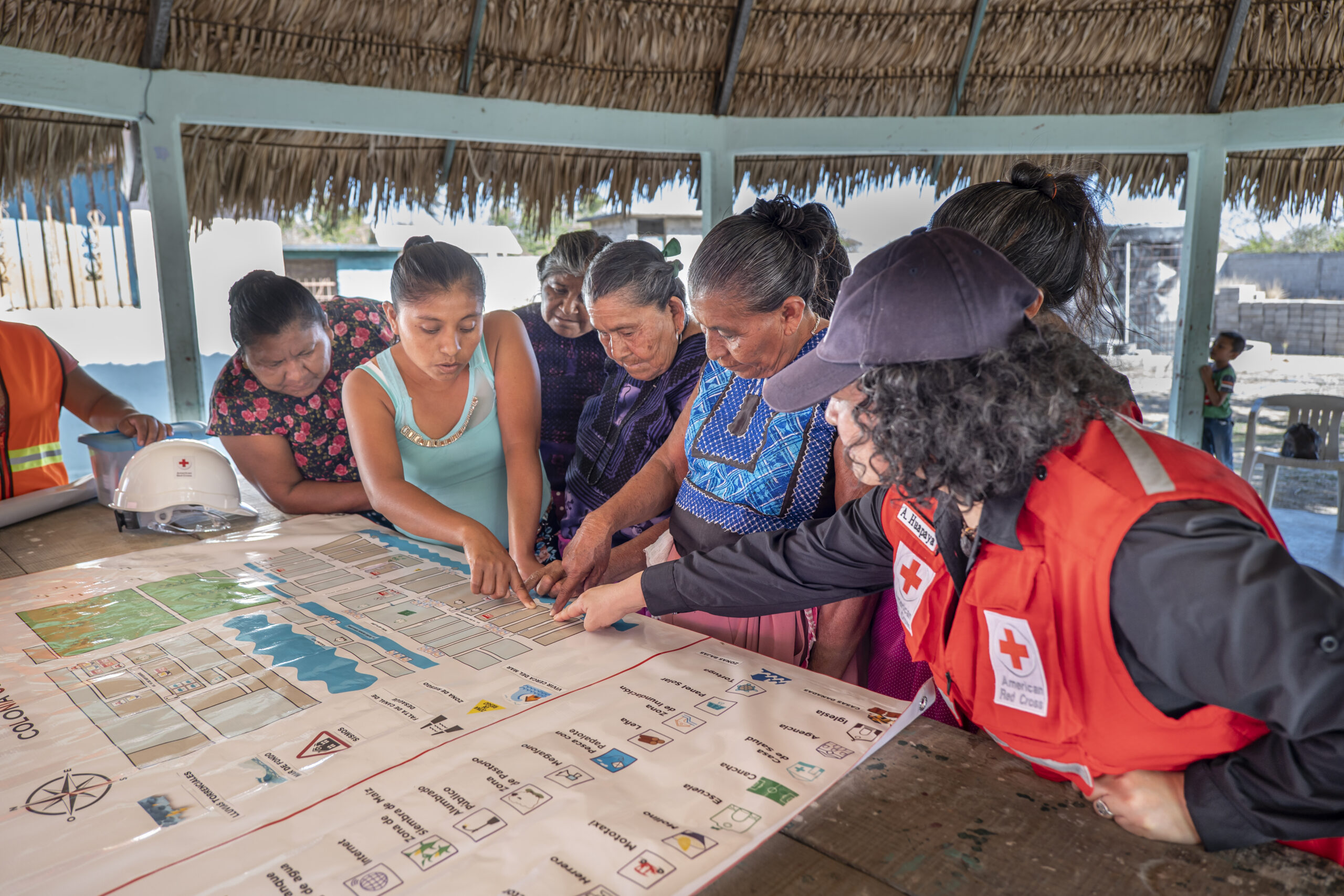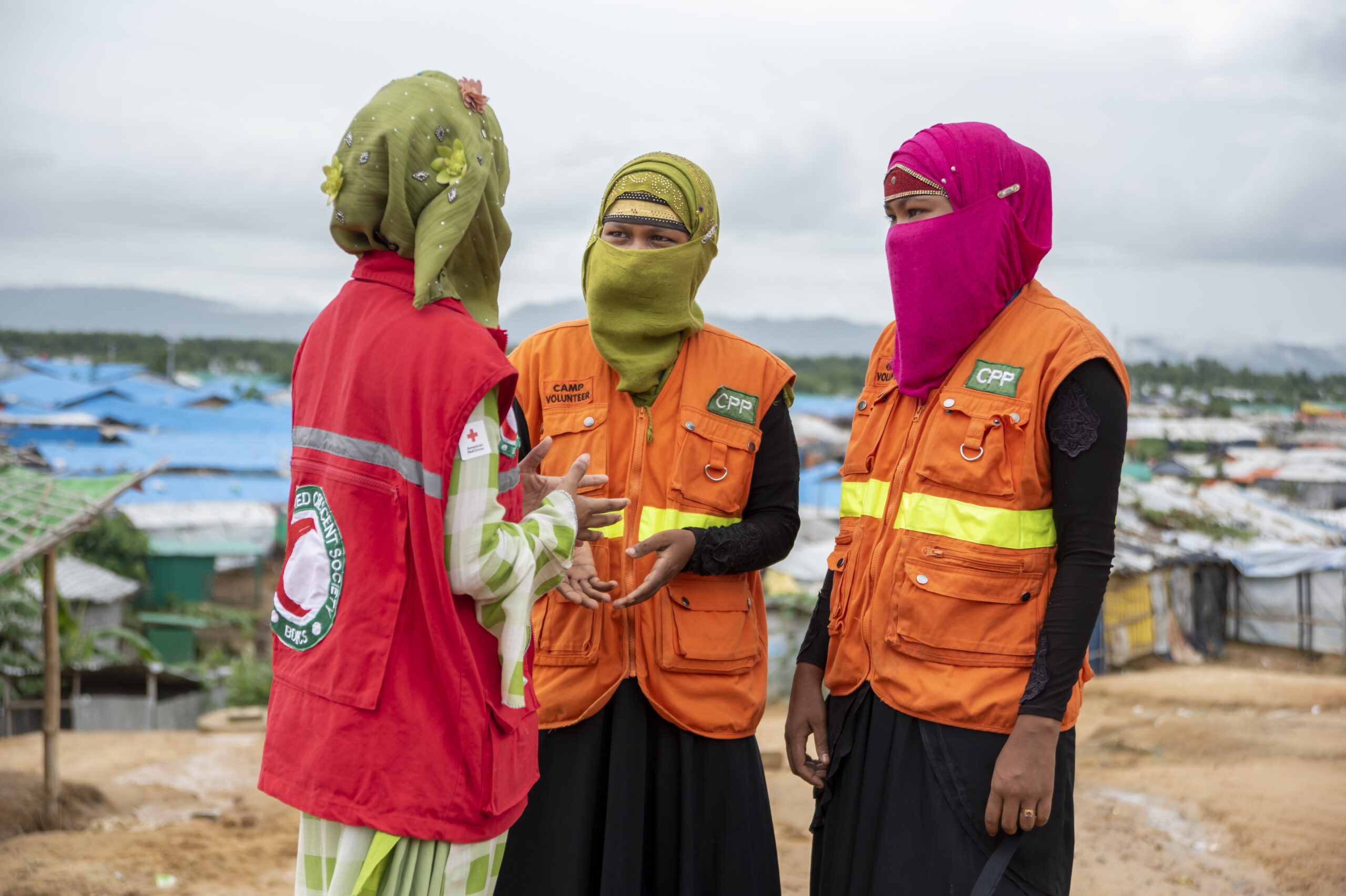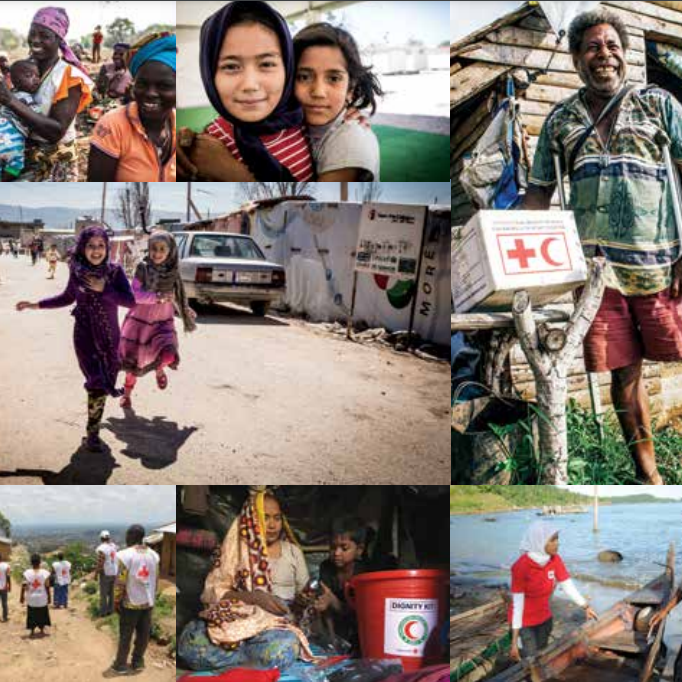Women and Gender in Disaster Management
Successful measures for disaster risk reduction and preparedness require the balanced and active participation of all genders and age groups. Gender roles and relations are critical but often ignored in disaster management. To be effective, practitioners should understand how gender affects vulnerability and risk to disasters in different societies. Stakeholders should also support women’s leadership and capacity to build resilience in disaster-prone communities.

Why are women disproportionally affected?
Existing gender inequalities across society increase women’s vulnerability to disasters and their impacts. In many societies, the different roles and responsibilities that women carry in the household leave them overburdened in times of disasters and emergencies, leaving them with distinct survival disadvantages compared to men. When disaster strikes, women and children are 14 times more likely than men to die, demonstrating the disproportionate risks they face.
According to a policy brief by UNDRR “gender inequality, coupled with climate and environment crises, is the greatest sustainable development challenge of the present time”. Women and girls face distinct risks and needs that often go overlooked, from lack of access to sexual and reproductive healthcare to increased exposure to gender-based violence.
Some of the barriers that prevent addressing these issues are the lack of sex, age and disability disaggregated data, the lack of women in decision-making positions, and the lack of gender analysis in disaster and climate risk management. These barriers can be overcome by mainstreaming gender in disaster risk reduction and humanitarian action, which can reduce the impacts of disasters and create opportunities for women and girls, as well as balance the exposure to hazards.
According to a long-term study, in a sample of up to 141 countries over the period 1981 to 2002 "natural disasters lower the life expectancy of women more than that of men. In other words, natural disasters (and their subsequent impact) on average kill more women than men or kill women at an earlier age than men”. Acknowledging the risk disparity and gender inequalities by incorporating gender mainstreaming in assessing the implications for women and girls of any planned action, including legislation, policies or -programs, particularly in preparedness and response to risk and disasters.
Gender-responsive Disaster Risk Reduction

Gender-responsive disaster risk reduction (DRR) is an approach that considers gender-based differences and issues in the design of policies, strategies, plans, or programs, and promotes gender equality in their implementation. The impact of gender norms, roles, and relations on people’s lives within a given culture and society is critical to understanding and reducing disaster risk, with gender discrimination often limiting the control that women and girls have over decisions that govern their lives, as well as their access to resources and opportunities.
Gender-disaggregated data (GDD)
When we use a gender-aware approach, it's important to recognize that women and men have different vulnerabilities, capacities, needs, life experiences, and expectations. Gender-disaggregated data (GDD) helps in understanding these differences better. This means breaking down information by sex and gender when assessing needs and planning programs. Sometimes this involves asking questions in a different way, at other times it entails going back to the information source and attempting to see if more disaggregated data is available.
It is critical to think of disaster risk reduction by incorporating a gendered perspective. Even though gender roles may change during a disaster, gender analysis can serve as a lens to better understand community dynamics and how people may react in crises. This analysis enables more effective preparedness and response.
Inclusive leadership and decision-making
To make disaster risk reduction effective, both men and women should be equally involved in planning, decision-making, and identifying preparedness activities. Policymakers and practitioners should consider the gender roles of a society when planning for disasters and actively work to include gender perspectives in disaster management.
There's a positive shift in recognizing and promoting grassroots women in disaster-prone communities as leaders. Women are actively contributing to building resilience in their communities by adapting to changes, organizing collectively, and using traditional knowledge. Despite facing challenges, experiences show that poverty and marginalization don't make women passive in the face of disasters or development challenges.
By learning from existing initiatives and focusing on women's strengths, knowledge, and experience in managing community resources, RCRC National Societies and other organizations can make significant progress. This includes reducing post-disaster gender disparity, increasing diversity and women's involvement, and making communities more resilient to natural hazards and climate change.
Protection, Gender And Inclusion In Emergencies
Disasters impact different people differently depending on their personal and social characteristics. Factors such as sex, gender identity, age, physical ability, race, nationality and others can influence their recovery and resilience in situations of conflict and crisis. Emergencies can also deepen existing inequalities and existing inequalities and disproportionately affect vulnerable groups such as women, children and the elderly.
The IFRC's minimum Protection, Gender and Inclusion (PGI) standards provide an integrated approach to address the causes, risks and consequences of violence, discrimination and exclusion. These standards help identify people's needs and capacities to protect and support marginalized groups.
Minimum standards for PGI in emergencies
PGI is the IFRC's approach to tackle the causes, risks and consequences of violence, discrimination and exclusion in an integrated way.
The IFRC’s Minimum standards for protection, gender, and inclusion (PGI) in emergencies is now in its second edition, available in English, Spanish, French, and Arabic. For a more in-depth approach an online course is available through the IFRC learning platform, we recommend this to get basic knowledge about Protection, Gender and Inclusion (PGI), better identify of people’s needs and capacities, and confidently use PGI in your work to protect and support people who are marginalized or in vulnerable situations.
Sexual and Gender based violence in disasters
There is a growing recognition that affected populations during disasters can experience various forms of gender-based violence (GBV). When people have to evacuate, relocate or return to their homes, they may face increased risks of different forms of GBV, such as sexual and physical assault, intimate partner violence, prostitution, child and/or forced marriage, and trafficking for sexual or labor exploitation.
This report on laws, policies and institutional frameworks aims to promote gender equality and prevent and respond to sexual and gender-based violence in disasters, it considers national laws and community experiences to evaluate their effectiveness in protecting against disaster related SGBV and ensuring gender equality in humanitarian response.
The report explores case studies in Ecuador, Nepal and Zimbabwe and takes an in depth look to the laws and response systems, one of the conclusions points at the need to better educate responders and better coordinate with actors such as police, military and post – disaster services like shelters, improves Sexual and Gender Based Violence protection.

